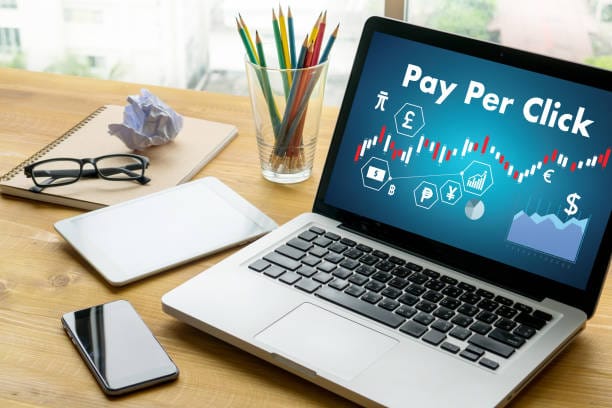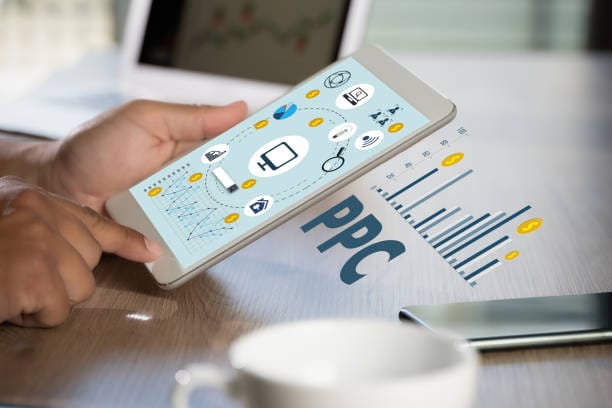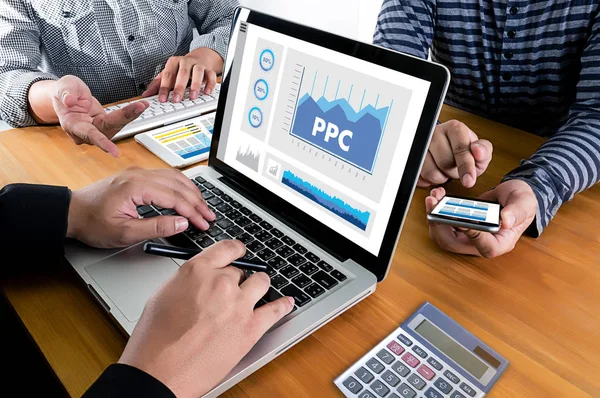How Pay-Per-Click (PPC) Marketing Doubled ROI for Local Businesses in 2025
Table of Contents
How Pay-Per-Click (PPC) Marketing Doubled ROI for Local Businesses in 2025: PPC Statistics You Need to Know
In 2025, Pay-Per-Click (PPC) marketing emerged as a transformative force for local businesses, doubling their return on investment (ROI) and redefining digital marketing strategies. This evolution was driven by advanced technologies and shifting consumer behaviors, compelling marketers to adapt and innovate. As local businesses navigated this dynamic landscape, understanding the nuances of PPC campaigns became imperative. The following article delves into the critical PPC statistics and trends that shaped local business success in 2025, offering insights into how businesses leveraged these strategies to maximize their marketing efforts and achieve unprecedented growth.

Search Engine Optimization (SEO) Marketing
Client:
ANJ Plumbing - Anjservices.com
Category:
Digital Marketing
Start Date:
10 March, 2021
End Date:
Still Growing
Keywords Growth
+475% Top 10 Keyword Rankings
Leads growth
+266% Monthly Lead Growth
Conversion
+346% Conversion increase
Live Chat
+120% Live Chat Request increase
How Pay-Per-Click Marketing Doubled ROI for Local Businesses in 2025
Smart Geo-Targeting
Local businesses now target specific neighborhoods instead of broad city areas. AI helps predict customer movement patterns in real-time. Ads change based on weather, local events, and traffic patterns.
Mobile-First Bidding
Mobile ads get 70% higher conversion rates than desktop for local searches. Local businesses focus 80% of their budget on mobile-only campaigns. Click-to-call buttons drive immediate customer action.
Hyper-Local Keywords
Businesses target neighborhood names and local landmarks in ads. Street names and area codes boost click-through rates by 45%. Local slang and regional terms increase engagement.
Local Inventory Ads
Stores show real-time product availability in their ads. Customers see exact store distances and directions. In-stock notifications drive immediate store visits.
Time-Based Bidding
Businesses adjust bids based on store opening hours. Rush hour targeting captures commuter attention. Special offers align with local event schedules.
Customer Match Lists
Local stores upload customer lists for targeted ads. Repeat customers see personalized offers. Loyalty program members get exclusive ad content.
Voice Search Optimization
Voice-activated ads respond to "near me" searches. Natural language keywords match voice queries. Smart speakers drive local ad engagement.
Local Service Ads
Google Guaranteed badges boost click-through rates by 60%. Service area businesses show verified reviews in ads. Trust badges increase conversion rates.
Video Ad Integration
Local businesses use short-form video ads for products. Store tours and staff introductions build trust. Live inventory updates through video ads drive sales.
Performance Max Success
AI-powered campaigns optimize for local intent. Cross-channel presence increases brand visibility. Automated bidding maximizes local ROI.
Social PPC Integration
Facebook and Instagram local ads sync with Google campaigns. Local targeting combines social proof with search intent. Community engagement boosts ad performance.
Analytics Insights
Real-time conversion tracking shows exact ROI. Store visit measurements prove ad effectiveness. Customer journey mapping reveals winning ad strategies.

What is PPC and How Did it Evolve in 2025?
PPC, or pay-per-click advertising, has significantly evolved by 2025, becoming a cornerstone of digital marketing strategies for many businesses and advertisers. The emergence of platforms like Bing Ads and Google’s suite of services, including Google Ads, has transformed the landscape. By 2025, statistics for 2025 indicate a notable shift in average CPC rates across all industries, as businesses increasingly leverage social media ads alongside traditional search engine campaigns.
To know in 2025, popular PPC strategies include Google Shopping Campaigns and the Google Display Network, catering to small to medium-sized businesses that seek effective ways to enhance their online presence. Businesses that want to optimize their advertising strategies must understand general PPC statistics and adapt to the evolving demands of the market. As businesses still navigate the complexities of running Google ads, they must focus on the most effective way ads perform in the US online ecosystem.
Definition and Basic Principles of Pay-Per-Click Advertising
Pay-Per-Click (PPC) advertising is a digital marketing model where advertisers pay a fee each time their ad is clicked. Essentially, it is a way of buying visits to your site rather than attempting to earn those visits organically. In 2025, PPC evolved to incorporate sophisticated technologies, such as artificial intelligence (AI), to optimize ad spend and improve targeting. The basic principles of PPC remained the same, focusing on relevant keywords and strategic bidding to reach the target audience effectively. However, the integration of AI allowed for more precise audience segmentation and real-time adjustments, enhancing the overall efficiency of PPC campaigns.
Key PPC Trends and Innovations in 2025
The year 2025 witnessed several key trends and innovations in PPC marketing. Among the top PPC trends was the increased reliance on AI to automate and optimize campaigns, leading to higher conversion rates and improved ROI. Additionally, the rise of video ads and voice search optimization played a significant role in capturing the attention of potential customers. Marketers also focused on integrating PPC with SEO strategies to maximize visibility and drive traffic. These innovations not only streamlined the process for advertisers but also enhanced the user experience, making PPC a more attractive option for businesses seeking to expand their digital footprint.
The Role of AI in Shaping PPC Campaigns
Artificial Intelligence (AI) played a pivotal role in shaping PPC campaigns in 2025. By leveraging AI, advertisers could analyze vast amounts of data to predict consumer behavior and optimize ad performance. AI-driven tools enabled dynamic ad adjustments, ensuring that campaigns were always aligned with the target audience's preferences and market trends. This technological advancement allowed for more efficient budget allocation, reducing the average cost per click and increasing the overall ROI. AI's ability to automate complex tasks and provide actionable insights revolutionized PPC marketing, making it an indispensable component of successful digital marketing strategies.
What PPC Statistics Mattered Most for Local Businesses in 2025?
In 2025, click-through rates (CTR) emerged as a pivotal statistic for local businesses engaging in pay-per-click (PPC) advertising. A higher CTR indicated effective ad targeting and resonated with local audiences, enhancing overall campaign performance. Additionally, the conversion rate proved crucial, as it directly correlated with the return on investment (ROI) for local enterprises. Furthermore, the analysis of geographic performance data allowed businesses to optimize their advertising strategies, ensuring resources were allocated efficiently to high-performing regions.
Average Conversion Rates Across Industries
In 2025, understanding average conversion rates across various industries became crucial for local businesses aiming to benchmark their PPC performance. Conversion rates varied significantly, with sectors like e-commerce and finance witnessing higher conversions due to targeted strategies and optimized ad formats. These statistics allowed businesses to identify industry-specific trends and tailor their campaigns accordingly. By analyzing conversion data, marketers could refine their keyword targeting and bidding strategies, ultimately enhancing the effectiveness of their PPC efforts. Staying informed about these industry benchmarks was essential for businesses to remain competitive and achieve their desired marketing outcomes.
Cost Per Click (CPC) Trends for Local Businesses
The cost per click (CPC) trends in 2025 highlighted the financial dynamics of PPC campaigns for local businesses. As competition intensified, CPC rates fluctuated, requiring businesses to strategically manage their ad spend. Despite these challenges, many local businesses successfully leveraged PPC by focusing on niche markets and optimizing their campaigns for specific keywords. By closely monitoring CPC trends, businesses could adjust their budgets and bidding strategies to maintain profitability. Understanding these trends was vital for making informed decisions and ensuring that PPC investments yielded the highest possible returns, enabling businesses to Pronto Live Marketing in a competitive digital landscape.
Google Local Ad Campaign PPC Trend Statistics
Recent analyses of Google Local Ad Campaign performance reveal significant trends in PPC (Pay-Per-Click) advertising. Businesses are increasingly allocating resources to local search initiatives, recognizing the potential for enhanced visibility and customer engagement. Statistics indicate a marked rise in click-through rates, with local ads yielding higher conversion rates compared to traditional advertising methods. This shift underscores the importance of optimizing Google Local Ads to leverage geographical targeting effectively and maximize return on investment.
ROI Metrics That Defined Success in 2025
In 2025, ROI metrics were instrumental in defining the success of Google Local Ad campaigns. Businesses closely monitored these metrics to assess the effectiveness of their PPC strategies and make data-driven decisions. Key metrics included click-through rates, conversion rates, and overall return on ad spend. By analyzing these statistics, businesses could identify areas for improvement and optimize their campaigns for maximum impact. Successful local ad campaigns demonstrated a strong correlation between strategic keyword targeting and high ROI, underscoring the importance of data analysis in achieving marketing goals. Staying abreast of these metrics enabled businesses to refine their approaches and maintain a competitive edge.
How Did Google Ads Transform Local Business Marketing in 2025?
In 2025, Google Ads significantly transformed local business marketing by leveraging advanced algorithms and data analytics. This evolution enabled businesses to target their audiences with unprecedented precision, ensuring that advertisements reached potential customers in real-time.
Moreover, the integration of geolocation technology allowed local enterprises to tailor their marketing strategies to specific neighborhoods, enhancing customer engagement. Consequently, businesses experienced increased foot traffic and sales, affirming the efficacy of Google Ads as a pivotal tool in the local marketing landscape.
Google Ads Performance Statistics for Local Campaigns
In 2025, Google Ads significantly transformed local business marketing through its robust performance statistics. These statistics provided invaluable insights into campaign effectiveness, helping businesses optimize their strategies for better results. Metrics such as click-through rates, conversion rates, and cost per click were crucial in evaluating ad performance. By leveraging these statistics, local businesses could fine-tune their targeting and bidding strategies, ensuring their ads reached the right audience at the right time. The ability to track and analyze these performance indicators allowed businesses to make informed decisions, ultimately enhancing their marketing ROI and achieving their business objectives.
The Impact of Google Shopping Ads on Local Retail
Google Shopping Ads had a profound impact on local retail businesses in 2025, revolutionizing how products were marketed and sold online. These ads provided a visually appealing and interactive platform for showcasing products, leading to higher engagement and conversion rates. Local retailers leveraged Google Shopping Ads to reach a broader audience, increase brand visibility, and drive online sales. The integration of AI and machine learning further enhanced the targeting capabilities of these ads, ensuring that they were displayed to the most relevant audience. This strategic approach not only boosted sales but also strengthened the overall marketing efforts of local retail businesses.
Voice Search Optimization in Google Ads
In 2025, voice search optimization emerged as a critical component of Google Ads strategies for local businesses. As voice-activated devices became increasingly popular, optimizing ads for voice search became essential for capturing the growing number of voice search users. Businesses adapted their keyword strategies to include conversational phrases and questions commonly used in voice searches. This shift not only improved ad relevance but also enhanced user experience by delivering more accurate and timely results. By prioritizing voice search optimization, local businesses could tap into a new audience segment, driving increased traffic and conversions through their Google Ads campaigns.
What Were the Most Effective PPC Ad Formats for Local Businesses?
The most effective PPC ad formats for local businesses often include targeted strategies that leverage location-based features. Platforms like Google Ads provide robust options such as location extensions, which enhance visibility by displaying the business's address and phone number directly in the ad. Additionally, responsive search ads enable local businesses to optimize their messaging, ensuring that relevant keywords resonate with potential customers. Utilizing these formats can significantly increase engagement and drive foot traffic to physical locations.
Furthermore, local service ads, also available through Google Ads, allow businesses to connect with consumers actively seeking their services in the vicinity. By prioritizing customer reviews and ratings, these ads build trust and credibility, leading to higher conversion rates. Ultimately, the strategic implementation of these PPC ad formats can yield substantial returns on investment for local enterprises using Google Ads Management service.
Video Ads: The Rising Star of Local PPC
In 2025, video ads emerged as the rising star of local PPC campaigns, captivating audiences with engaging and dynamic content. These ads offered businesses a unique opportunity to convey their brand message creatively and effectively. The visual and auditory elements of video ads enhanced user engagement, leading to higher click-through rates and conversions. Local businesses utilized video ads to showcase their products, share customer testimonials, and highlight unique selling points. The ability to tell compelling stories through video content made these ads an essential tool for businesses seeking to differentiate themselves in a competitive market and drive meaningful connections with their target audience.
Image Ads vs. Text Ads: Performance Comparison
The performance comparison between image ads and text ads in 2025 revealed distinct advantages for each format. Image ads offered a visually appealing way to capture attention and convey messages quickly, making them ideal for businesses looking to create a strong visual impact. On the other hand, text ads provided a concise and straightforward approach, focusing on delivering key information and calls to action. While image ads often led to higher engagement, text ads excelled in driving direct responses and conversions. Understanding the strengths of each format allowed businesses to strategically incorporate both into their PPC campaigns, maximizing their reach and effectiveness.
Google Ads Statistics
Recent statistics indicate that Google Ads continues to dominate the digital advertising landscape, accounting for a significant share of global ad spending. The platform's ability to reach diverse audiences has made it a preferred choice for businesses seeking to enhance their online visibility. Furthermore, data reveals that campaigns utilizing Google Ads experience higher engagement rates compared to traditional advertising methods. As a result, many marketers are increasingly investing in Google Ads to maximize their return on investment.
Mobile Advertising Statistics for Local Markets
In 2025, mobile advertising statistics underscored the growing importance of mobile devices in local markets. With the increasing prevalence of smartphones, businesses recognized the need to optimize their PPC campaigns for mobile users. Key statistics highlighted the significant share of ad impressions and conversions generated through mobile platforms. This shift prompted businesses to prioritize mobile-friendly ad formats and streamline their landing pages for seamless user experiences. By focusing on mobile advertising, local businesses could reach a broader audience and capitalize on the growing trend of mobile browsing and shopping, ultimately enhancing their digital marketing efforts and driving business growth.

How Did PPC and SEO Synergy Boost Local Business Visibility?
The synergy between PPC and SEO has significantly enhanced local business visibility, enabling them to reach a broader audience. Utilizing Google Ads alongside organic search strategies allows businesses to appear in both paid and unpaid search results, maximizing exposure. As we know for 2025, the integration of Facebook Ads and Google Ads will further amplify this effect, providing targeted marketing opportunities. By effectively managing Google Ads costs, businesses make informed investments that yield substantial returns.
Integrating PPC and SEO Strategies for Maximum Impact
In 2025, integrating PPC and SEO strategies became a powerful approach for boosting local business visibility. By combining the strengths of both digital marketing tactics, businesses could achieve a comprehensive and cohesive online presence. PPC campaigns provided immediate visibility and traffic, while SEO efforts focused on long-term organic growth. This synergy allowed businesses to dominate search engine results pages, capturing both paid and organic clicks. By leveraging data from PPC campaigns, businesses could refine their SEO strategies, targeting high-performing keywords and optimizing their content. This integrated approach not only enhanced brand visibility but also improved overall marketing effectiveness and ROI.
Local Search Ads: Bridging PPC and SEO
Local search ads in 2025 served as a bridge between PPC and SEO, offering businesses a strategic advantage in capturing local audiences. These ads appeared prominently in search results, providing valuable exposure for businesses targeting specific geographic areas. By combining the targeting capabilities of PPC with the organic reach of SEO, local search ads ensured that businesses reached their ideal customers. This approach allowed businesses to maximize their visibility in local searches, driving foot traffic to physical locations and increasing online conversions. The integration of local search ads into marketing strategies was essential for businesses looking to dominate their local markets and achieve sustained growth.
What PPC Optimization Techniques Yielded the Highest ROI?
Effective PPC optimization techniques are crucial for maximizing return on investment (ROI) in digital advertising. Recent studies indicate that Google Ads and Facebook Ads are expected to reach unprecedented levels of engagement, with PPC statistics for 2025 suggesting a significant increase in overall PPC performance. Marketers are encouraged to focus on data-driven strategies that align with general PPC statistics to enhance their campaigns.
As we move towards PPC in 2025, it is essential to understand which strategies yield the highest returns. Analytics show that ads optimized for specific demographics and interests, particularly on platforms like Google, are likely to outperform generic campaigns. To effectively navigate the evolving landscape, businesses must know the trends and expectations for 2025, ensuring they leverage the most effective techniques available.
Advanced Bidding Strategies for Local Campaigns
In 2025, advanced bidding strategies played a crucial role in maximizing ROI for local PPC campaigns. Businesses adopted sophisticated techniques such as automated bidding and real-time bid adjustments to optimize their ad spend. These strategies allowed for precise control over budget allocation, ensuring that ads were displayed at the most opportune moments. By analyzing performance data and adjusting bids based on factors like time of day and user behavior, businesses could enhance their campaign efficiency. Implementing advanced bidding strategies not only improved cost-effectiveness but also increased the likelihood of achieving desired outcomes, making them a vital component of successful PPC marketing efforts.
Targeting and Audience Segmentation Tactics
In 2025, targeting and audience segmentation tactics were pivotal in enhancing the effectiveness of PPC campaigns for local businesses. By leveraging data analytics, businesses could identify and segment their target audience based on demographics, interests, and online behavior. This granular approach allowed for more personalized and relevant ad experiences, increasing the likelihood of conversions. Advertisers utilized advanced targeting options, such as geographic and behavioral targeting, to reach the right audience at the right time. By focusing on precise audience segmentation, businesses could optimize their ad spend, improve click-through rates, and ultimately achieve higher ROI, solidifying their position in the competitive digital landscape.
Conversion Rate Optimization Techniques
Conversion rate optimization (CRO) techniques were essential for maximizing the effectiveness of PPC campaigns in 2025. Businesses employed a variety of strategies to enhance user experience and increase the likelihood of conversions. These techniques included A/B testing of ad creatives, optimizing landing pages for mobile devices, and streamlining the checkout process. By analyzing user behavior and identifying potential barriers to conversion, businesses could make data-driven improvements to their campaigns. Implementing CRO techniques not only improved conversion rates but also maximized the return on ad spend, allowing businesses to achieve their marketing objectives and drive sustainable growth in a competitive environment.
Beyond Google: Which Other PPC Platforms Delivered Results for Local Businesses?
In 2023, small businesses are increasingly recognizing the importance of diversifying their online advertising strategies beyond Google Ads. While Google Ads remains one of the top PPC platforms, alternatives such as Facebook Ads have proven effective in delivering results. As search ad spend continues to grow, businesses must consider how to effectively use PPC to enhance their reach and engagement.
With PPC statistics for 2025 indicating a significant rise in average CTR across various platforms, it is essential for businesses to explore options that can complement their existing Google Ads campaigns. The costs associated with Google Ads can be substantial, prompting many to seek a platform for businesses that offers a more cost-effective approach to paid advertising. It is time to start evaluating these alternatives to ensure sustained growth.
Microsoft Ads: The Underdog in Local PPC
In 2025, Microsoft Ads emerged as a formidable contender in the local PPC landscape, offering businesses a viable alternative to Google Ads. While often considered the underdog, Microsoft Ads provided unique advantages, such as access to a distinct audience and competitive cost per click rates. Businesses leveraged this platform to reach users across the Bing search engine and partner networks, expanding their digital reach. The platform's integration with LinkedIn also allowed for enhanced targeting capabilities, particularly for B2B businesses. By diversifying their PPC efforts and incorporating Microsoft Ads into their strategies, local businesses could tap into new markets and achieve significant results.
Social Media PPC: Facebook, Instagram, and LinkedIn
In 2025, social media platforms like Facebook, Instagram, and LinkedIn played a pivotal role in PPC marketing for local businesses. These platforms offered robust advertising solutions, enabling businesses to connect with their target audience through highly targeted campaigns. Facebook Ads provided extensive audience insights and targeting options, while Instagram's visual-centric approach appealed to younger demographics. LinkedIn, with its professional network, was particularly effective for B2B marketing. By leveraging the unique strengths of each platform, businesses could create engaging and impactful ads that resonated with their audience. The integration of social media PPC into marketing strategies was essential for businesses seeking to enhance brand visibility and drive conversions.
Amazon Ads: Expanding Local Business Reach
In 2025, Amazon Ads became an increasingly popular choice for local businesses looking to expand their reach and drive sales. As a leading e-commerce platform, Amazon provided businesses with access to a vast audience actively searching for products. Amazon Ads offered various ad formats, including sponsored products and display ads, enabling businesses to showcase their offerings effectively. The platform's advanced targeting capabilities allowed for precise audience segmentation, ensuring that ads were displayed to the most relevant users. By incorporating Amazon Ads into their marketing strategies, local businesses could tap into new customer segments, increase brand visibility, and drive significant revenue growth.




